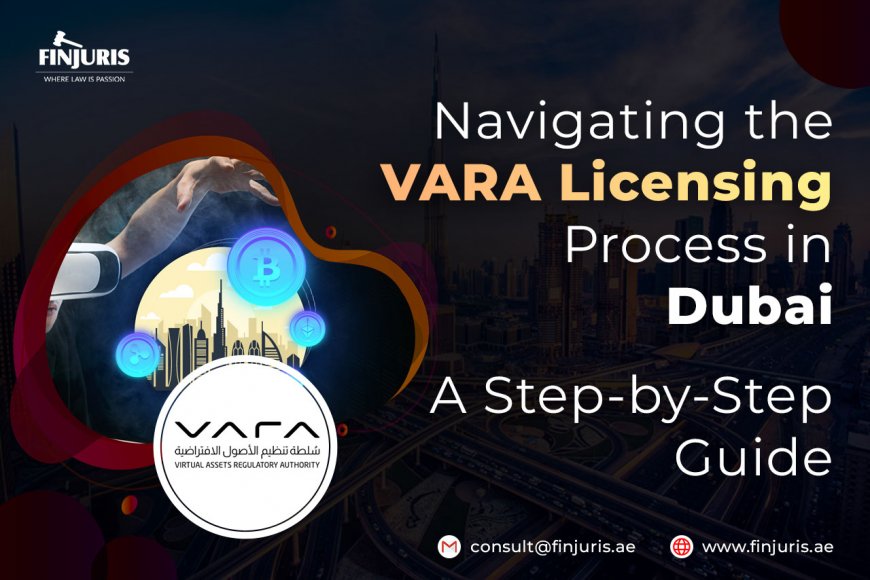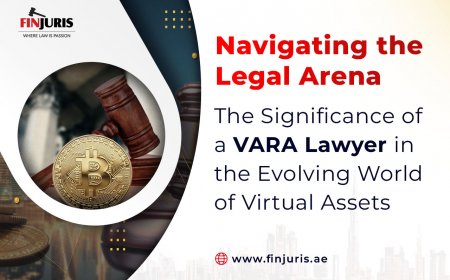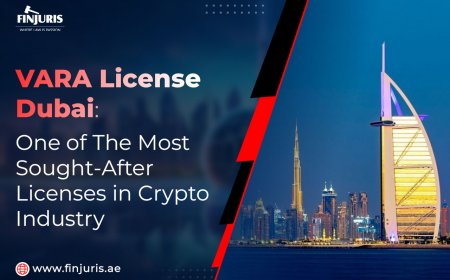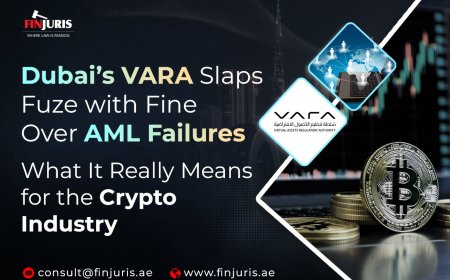Navigating the VARA Licensing Process in Dubai: A Step-by-Step Guide
Get licensed with Dubai’s VARA. This step-by-step guide covers requirements, process, costs, and compliance for crypto businesses.

Dubai has built one of the world’s most comprehensive virtual asset frameworks—clear rules, a dedicated regulator, and a structured path from idea to full-scale launch. If you’re planning to offer crypto or broader digital-asset services in the emirate, you’ll need a VARA Dubai License (often called a VASP license Dubai) before you start operating. This guide walks you through the VARA application process, who needs a Dubai VARA License, what it costs, how long it takes, and how to stay compliant once you’re live.
Throughout, we reference Dubai’s Virtual Assets Regulatory Authority (VARA)—the regulator responsible for Dubai virtual asset regulation—and its rulebooks.
Dubai’s digital-economy strategy pairs innovation with guardrails. For virtual asset businesses, that means real opportunities—but also a real licensing process. A VARA license in Dubai confers credibility with customers, partners, and banks; it’s the gateway to scaling safely in the UAE and across the region. This article is your operational playbook: what VARA is, whether you need a license, the license types, capital and documentation requirements, the step-by-step application, costs, timelines, and how to stay ahead of VARA compliance once you launch.
What is VARA?
The Virtual Assets Regulatory Authority (VARA) is Dubai’s specialist regulator for virtual assets. It is the **sole authority regulating virtual assets across Dubai’s mainland and all free zones—**with one carve-out: the Dubai International Financial Centre (DIFC) remains outside VARA’s remit. VARA sets the rules, supervises licensed firms, and maintains a public register.
In practice, that means:
- Building and updating a full regulatory framework (Regulations + Rulebooks).
- Running the two-stage licensing journey for new firms.
- Supervising compliance, technology standards, market conduct, and AML/CFT controls post-licensing.
Who needs a VARA license?
If you plan to carry on virtual asset activities in or from Dubai (excluding DIFC)—whether you’re on the mainland or in a free zone—you must be licensed by VARA before you start. No activities are “exempt” from regulatory oversight simply because they’re novel or purely tech-enabled.
Virtual Asset Service Providers (VASPs) that typically require licensing include:
- Exchanges (spot, derivatives, order-book operators, matching engines)
- Brokers / dealers (soliciting, matching, executing orders for others)
- Custodians (safekeeping client assets)
- Lenders / platforms (lending and borrowing against VAs)
- Managers / advisers (portfolio management, investment services, or formal advice)
- Transfer & settlement providers (infrastructure/processors) vara.ae
Two special points from Dubai digital asset regulation you should know up front:
- Custody must be segregated. VARA requires custodial activity to be housed in a separate legal entity with its own license.
- Proprietary trading (trading only your own book) may not need a full VASP license but does require a VARA No-Objection Certificate (NOC); large volumes must be registered with VARA.
Read More: Why is a VARA License Dubai Pivotal for Every Crypto Venture in UAE?
Types of VARA Licenses
VARA structures the market around eight regulated activities. You can apply for one or several (subject to additional requirements where you combine them). Here’s the landscape you’ll see in the VARA application process:
- Advisory Services – advising on buying, selling, or investing in Virtual Assets.
- Broker-Dealer Services – soliciting, matching, and executing orders on behalf of others.
- Custody Services – safekeeping client assets (must be a separate entity).
- Exchange Services – operating markets, including matching engines and order books.
- Lending & Borrowing Services – platforms enabling loans/borrowing secured by VAs.
- VA Management & Investment Services – discretionary management/collective schemes.
- Transfer & Settlement Services – enabling transfers and settlement rails.
- VA Issuance Category 1 – certain issuance activities governed by a dedicated rulebook.
Each activity has its own detailed rulebook (in addition to four compulsory rulebooks that apply to all VASPs, covered later).
Licensing Requirements (What VARA looks for)
At a high level, VARA licensing requirements span your legal setup, financial resources, governance/people, and risk/compliance systems.
- Legal entity in Dubai
You’ll incorporate on the mainland (via DET) or in a Dubai free zone (excluding DIFC), aligned with the business you’re running and where your customers and team will be. Custody must sit in a dedicated, separately licensed entity. - Minimum capital
VARA sets activity-specific Paid-Up Capital thresholds (see section 9 for the table and costs). For example, Advisory requires AED 100,000, while Exchange requires the higher of AED 800,000 (if using a VARA-licensed custodian) or AED 1,500,000 in other cases—or a % of fixed annual overheads, whichever is higher. There are also Net Liquid Asset and Reserve Asset rules you must maintain at all times (covered under ongoing compliance). - Internal compliance (AML/KYC, risk & governance)
You’ll implement end-to-end AML/CFT controls, including onboarding due diligence, transaction monitoring, and on- and off-chain analytics, aligned with the Compliance & Risk Management Rulebook. - Technology & data protection
VARA’s Technology & Information Rulebook covers cybersecurity governance, secure systems development, resilience, and data protection (alongside UAE’s PDPL). Expect obligations around security policies, logging, incident management, and documentation (e.g., for algorithms used in trading/monitoring). - “Fit & proper” people
Directors and senior management must meet fitness & propriety standards (competence, experience, solvency, integrity). You must also appoint two “Responsible Individuals”—full-time, VARA-approved, and UAE residents or passport holders—who are accountable for the firm’s regulatory compliance.
The VARA Licensing Process: Step-by-Step
VARA’s official journey for new firms unfolds in two stages. The outline below maps closely to the “How to get VARA license” path on VARA’s site and mirrors Finjuris’ field guide.
Stage 1: Approval to Incorporate (ATI)
- Submit an Initial Disclosure Questionnaire (IDQ) via Dubai Economy & Tourism (mainland) or your chosen free zone.
- Provide initial documentation—business plan, details of beneficial owners/senior management, and other disclosures requested during screening.
- Pay the initial fees (typically 50% of the license application fee) so VARA can commence its review.
- Receive ATI to complete legal incorporation and start your operational build (office lease, hiring, bank account setup, systems procurement, etc.).
Important: ATI does not authorize you to carry on regulated activities yet.
Stage 2: Full VASP License
- Submit the full application pack in line with guidance you receive after ATI.
- Respond to VARA’s queries—expect meetings/interviews and requests for further evidence.
- Settle remaining application fees and first-year supervision fees.
- Receive your VARA License (sometimes with operational conditions you must meet before going fully live).
Existing operators (active prior to 7 Feb 2023) were transitioned via VARA’s Legacy Operating Permit (LOP) program, which—among other things—offered time-bound fee and capital relief to migrate into the full regime.
Read More: A Guide to Obtaining a VARA License in Dubai: Key Steps and Requirements
Documentation You’ll Need
VARA publishes a non-exhaustive list of documents to expect at application. Typical inclusions are:
- Corporate & ownership: Certificate of incorporation, organizational structure, UBO list, close-links analysis.
- People: Fit-and-proper attestations, CVs and passports for key persons, job descriptions, Responsible Individuals, and designated Compliance Officer.
- Governance & risk: Board/committee charters, governance framework, compliance manual, AML/CFT policy, technology & security policies, outsourcing registers.
- Financials: Financial projections, group/entity financial statements, proof of paid-up capital, reserve arrangements, insurance certificates, wind-down plan.
- Operational evidence: Website, succession plan, reserve account reports, insurance, and any other supporting materials VARA requests during review.
Finjuris’s guide usefully mirrors this structure and highlights the importance of a Regulatory Business Plan aligned to your selected license activities.
Compliance & Ongoing Obligations
Winning a Dubai VARA License is the start—VARA compliance Dubai is an ongoing discipline. Key standing obligations include:
Maintain capital, liquidity, and reserves
- Paid-Up Capital: Maintain the activity-specific minimum (see Section 9).
- Net Liquid Assets (NLA): Keep current liquid assets at ≥ 1.2 × monthly operating expenses, reconcile daily, and report monthly to VARA.
- Reserve Assets: Hold 100% of client liabilities in like-kind (one-to-one), reconcile daily, and obtain an independent audit at least every six months (with quarterly reporting to VARA).
The four compulsory rulebooks
All VASPs must comply with these at all times:
- Company Rulebook (governance, people, capital, wind-down)
- Compliance & Risk Management Rulebook (risk assessments, AML/CFT controls, reporting)
- Technology & Information Rulebook (security, resilience, data protection)
- Market Conduct Rulebook (client agreements, complaints, conduct rules, marketing)
AML/KYC program
You’ll implement risk-based onboarding, sanctions/watchlist screening, transaction monitoring, and—where relevant—distributed-ledger analytics, as called for in VARA’s AML/CFT expectations.
Cybersecurity & data privacy
Expect explicit requirements for governance, secure development, change management, incident response, third-party risk, and documentation of algorithmic systems. You must also align with UAE’s PDPL data-protection regime.
Insurance
Professional indemnity, D&O, commercial crime (e.g., for hot wallets), and any other cover VARA requires for your risk profile.
Record-keeping & reporting
Ongoing reporting spans financial, risk, and operational metrics (including the NLA and reserve obligations above) and ad-hoc notifications to VARA for material changes.
Timeline and Costs
A) Fees you’ll pay to VARA
VARA’s fee schedule is transparent and activity-based:
- Application fee (per first activity)
- License extension fee (for each additional activity)
- Annual supervision fee (per licensed activity, paid in advance)
Current headline amounts (selected examples):
- Advisory Services: Application AED 40,000; Annual Supervision AED 80,000
- Broker-Dealer / Custody / Exchange / Lending / Management & Investment: Application AED 100,000; Annual Supervision AED 200,000
- Transfer & Settlement: Application AED 40,000; Annual Supervision AED 80,000
- Extension fee for each additional activity: 50% of the lower application fee(s) added to your license.
Licenses are valid for one year and renewed annually; supervision fees recur each year.
B) Minimum capital you must hold (Paid-Up Capital)
VARA specifies Paid-Up Capital by activity, often as the higher of a fixed AED amount or a percentage of fixed annual overheads. Highlights:
- Advisory: AED 100,000
- Broker-Dealer: Using a VARA-licensed custodian: AED 400,000 or 15% of FAO; otherwise AED 600,000 or 25% of FAO
- Custody: AED 600,000 or 25% of FAO
- Exchange: With VARA-licensed custody: AED 800,000 or 15% of FAO; otherwise AED 1,500,000 or 25% of FAO
- Lending & Borrowing: AED 500,000 or 25% of FAO
- VA Management & Investment: With VARA-licensed custody: AED 280,000 or 15% of FAO; otherwise AED 500,000 or 25% of FAO
- Transfer & Settlement: AED 500,000 or 25% of FAO
(“FAO” = Fixed Annual Overheads.)
Net Liquid Assets must be ≥ 1.2× monthly operating expenses, and Reserve Assets must equal 100% of client liabilities, both maintained and reconciled per the Company Rulebook (see Section 8).
C) Other costs to budget
Beyond VARA’s fees and capital, build a realistic envelope for:
- Regulatory advisory & legal (license scoping, readiness, drafting)
- Compliance stack (KYC, screening, blockchain analytics, case management)
- Cybersecurity & infrastructure (hosting, key management/HSMs, monitoring)
- Insurance (PII, D&O, crime)
- Audit (financial statements; reserve-asset reviews)
- People (Responsible Individuals, Compliance Officer, MLRO/RO, tech/security)
D) Timelines (what to expect)
VARA notes that timelines depend on the complexity of your model and the completeness of your submission. Practically, Stage 1 (IDQ → ATI) is often the shorter leg; Stage 2 (full review → license) can involve multiple touchpoints with VARA. Build in time for iterative queries, tech due-diligence, and policy fine-tuning.
Common Challenges—and How to Overcome Them
1) Incomplete or inconsistent documentation
Missing policies, thin business plans, or unclear governance charts slow reviews. Solution: Start with a Regulatory Business Plan that clearly aligns your features to the exact activities you’re applying for, and map every rulebook obligation to a control in your Compliance Manual. Pre-screen your pack against VARA’s own documentation list.
2) Unclear business model or perimeter
Ambiguity over whether you’re a broker-dealer vs exchange vs transfer/settlement operator can create rework. Solution: Use a pre-application scoping session with experienced advisors to match features to license categories (e.g., matching engine = exchange; order routing = broker-dealer; settlement rails = transfer & settlement).
3) AML program not calibrated to crypto risk
Traditional KYC without sanctions screening, risk scoring, and on-chain analytics will not meet expectations. Solution: Implement a risk-based AML framework that blends on-chain and off-chain typologies, with documented escalation paths and management reporting.
4) Technology controls under-documented
Security policies that don’t cover secure development, key management, logs, or incident response (or lack evidence of algorithm documentation) can trigger follow-ups. Solution: Align early to the Technology & Information Rulebook; document architecture, access controls, SDLC, DR/BCP testing, and any algorithms used for pricing/monitoring.
5) Capital & liquidity mis-sizing
Forgetting the “higher of AED amount or % of fixed annual overheads” causes last-minute capital top-ups. Solution: Build a capital schedule that flexes with your revised financial model; track FAO changes and NLA daily reconciliation duties from day one.
Benefits of a VARA License
Legitimacy and trust. A Dubai VARA License signals robust governance and VARA compliance, giving comfort to customers, institutional partners, and banks.
Banking access. Licensed and supervised entities find it easier to open and maintain accounts and payments connectivity, because obligations and oversight are clearly defined.
Regional scale. Dubai’s role as a finance and technology hub makes a VARA license in Dubai a strong foundation for MENA expansion, partnerships, and talent attraction.
Alignment with global best practice. VARA’s framework (company governance, risk & compliance, technology, conduct) mirrors the “three-lines-of-defense” and risk-based principles seen in sophisticated jurisdictions. That gives your stakeholders clarity on how you operate.
Step-by-Step Checklist (Quick Reference)
Use this as a “single sitting” checklist to keep teams aligned across legal, compliance, risk, and engineering.
- Scope your activity set (Advisory, Broker-Dealer, Custody, Exchange, Lending & Borrowing, Management & Investment, Transfer & Settlement, VA Issuance Category 1).
- Choose the right commercial licensor (mainland via DET or a Dubai free zone; custody will require a separate entity).
- Stage 1 – IDQ & ATI (submit IDQ, initial docs, pay ~50% application fee; incorporate after ATI).
- Build the pack for Stage 2
- Regulatory Business Plan, financial model, capital confirmations
- Governance/people evidence (Board, RIs, Compliance Officer)
- AML/CFT policy + monitoring architecture
- Technology & security documentation
- Insurance, wind-down, outsourcing registers
- Capital & liquidity in place (Paid-Up Capital by activity; NLA ≥ 1.2×; 100% Reserve Assets).
- Submit Stage 2 application, respond to queries, settle fees (remaining application + first-year supervision).
- Go-live under supervision (meet any conditions; maintain reporting, audits, and rulebook compliance).
Final Tips for a Smooth Application
- Design for the rulebooks, not around them. Treat the four compulsory rulebooks as your product requirements doc. Map each control to a system, log, policy, or report, and keep evidence in a centralized repository.
- Invest in people early. Secure your two Responsible Individuals (UAE-resident/full-time) and your Compliance Officer well before Stage 2—your governance story is as important as your tech.
- Over-communicate with VARA. Proactive, complete responses to queries (with appendices and control evidence) save weeks later.
- Budget realistically. Combine VARA fees (application, extensions, annual supervision) with implementation costs for AML tech, security, insurance, and audits.
- Plan for post-license operations. Daily reserve and NLA reconciliations, monthly reporting, semi-annual reserve audits, and incident-response drills should be baked into BAU.
Dubai’s virtual asset framework is rigorous by design—and that’s the point. Earning a VARA Dubai License positions you as a trustworthy operator in a world-class jurisdiction, improves your banking and partnership options, and lays down a stable foundation for growth. If you approach the VARA licensing requirements as product specs—governance, risk, and technology your VARA application process becomes an exercise in good build hygiene rather than a regulatory gauntlet.
If you’re at the scoping phase, start with the activity categories and capital implications; if you’re further along, pressure-test your AML and technology documentation against the rulebooks before you submit. And if you want to move faster, engaging specialist compliance/technology counsel can shorten the iteration cycle.
Either way, the path is clear, the benefits are real, and the market is ready. When you’re prepared, getting a VARA license in Dubai is the first confident step toward regional and global expansion.
What's Your Reaction?




















